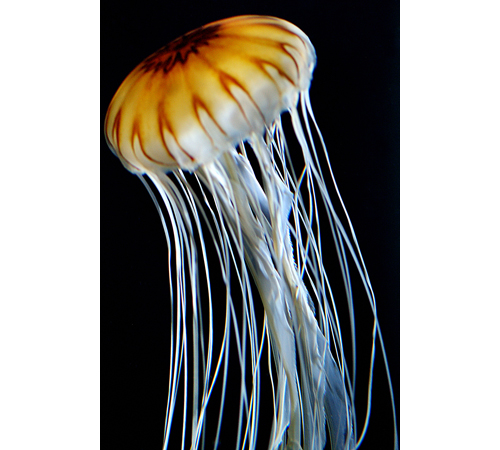Health Column: A foolish common cure for a jellyfish sting

The next time a friend makes his way up from the bay, writhing in pain from a jellyfish sting, do him a favor and keep your bottoms buttoned. The widely known fix of peeing on a jellyfish sting to stop the pain is nothing but a myth, and could actually intensify the pain, medical professionals say.
Pain from a sting is caused by venom-filled cells in the tentacles of the jellyfish, which remain on the skin after contact, said Christopher Clapp of The Nature Conservancy’s North Fork office.
Dr. Alexis Hugelmeyer of The Suah Center for Natural Healthcare in Riverhead said, “The best initial treatment is aggressively rinsing the affected area to rid the body of the stinging cells that may still be attached. Ideally you would use a very concentrated solution, such as salt water.”
Urine can offer a concentrated and easily accessible form of a salt solution, “hence the old wives’ tale,” Dr. Hugelmeyer explained.
But it’s never easy to predict just how concentrated one’s pee might be.
“If the urine is very dilute, the opposite effect can occur; it may make the stinging worse,” Dr. Hugelmeyer said.
The same is true if you try to treat a sting with fresh water, which actually reactivate the venom-filled cells, the experts say. Fresh water disrupts the salt balance between the outside and inside of the cells, causing them to fire, according to a Medical Journal of Australia study.
“So the best treatment is to get out of the water and rinse it aggressively with salt water,” Dr. Hugelmeyer said, adding that anyone having symptoms of nausea, vomiting, severe swelling or difficulty breathing should contact a physician or emergency services.
Lifeguards are commonly prepped with supplies to help, Mr. Clapp added, noting that some people can have more serious reactions than others.
Knowing what to look for in the waters around you is the best way to protect oneself from a sting.
The most common jellyfish species in Peconic and Long Island Sound waters is the lion’s mane jellyfish, which can vary greatly in size.
“They can range from just a couple inches across to almost a foot across,” Mr. Clapp said.
The larger of the lion’s mane jellies are bright red to dark purple in color while the smaller ones — which are commonly seen off the North Fork — tend to be tan to orange.
No matter the size, their tentacles are red or yellow in color, which is why it has earned the name lion’s mane, according to the not-for-profit National Aquarium aquatic education and conservation organization.
Mr. Clapp warned: “They can be all over the place — up close to the shore and out in open waters.”
And even dead, these slippery suckers can sting.
In July 2010, the dead carcass of a 40-pound lion’s mane jellyfish washed ashore on a North Carolina beach — stinging about 150 people in its wake, according to a New York Times article.
“Everyone was getting stung at the same time,” a witness said. “Kids were crying. It was like a scene from a movie.”
While a jelly that large is uncommon to begin with, jellyfish were not a common occurrence at the beach in question, according to the article.
If you come across jellies that have washed ashore, it’s “best to stay away from them, and not the best idea to bury them either,” Mr. Clapp said, as unknowing beachgoers could be stung should they resurface.
 Got a health question or column idea? Email Carrie Miller at [email protected]. Follow @carriemiller01
Got a health question or column idea? Email Carrie Miller at [email protected]. Follow @carriemiller01









